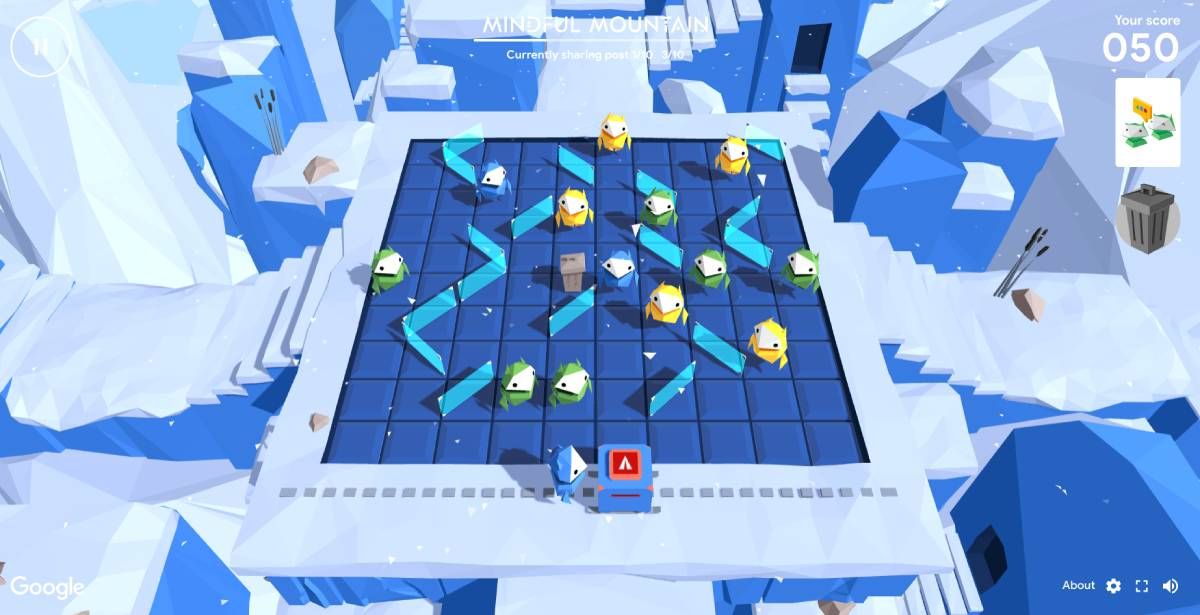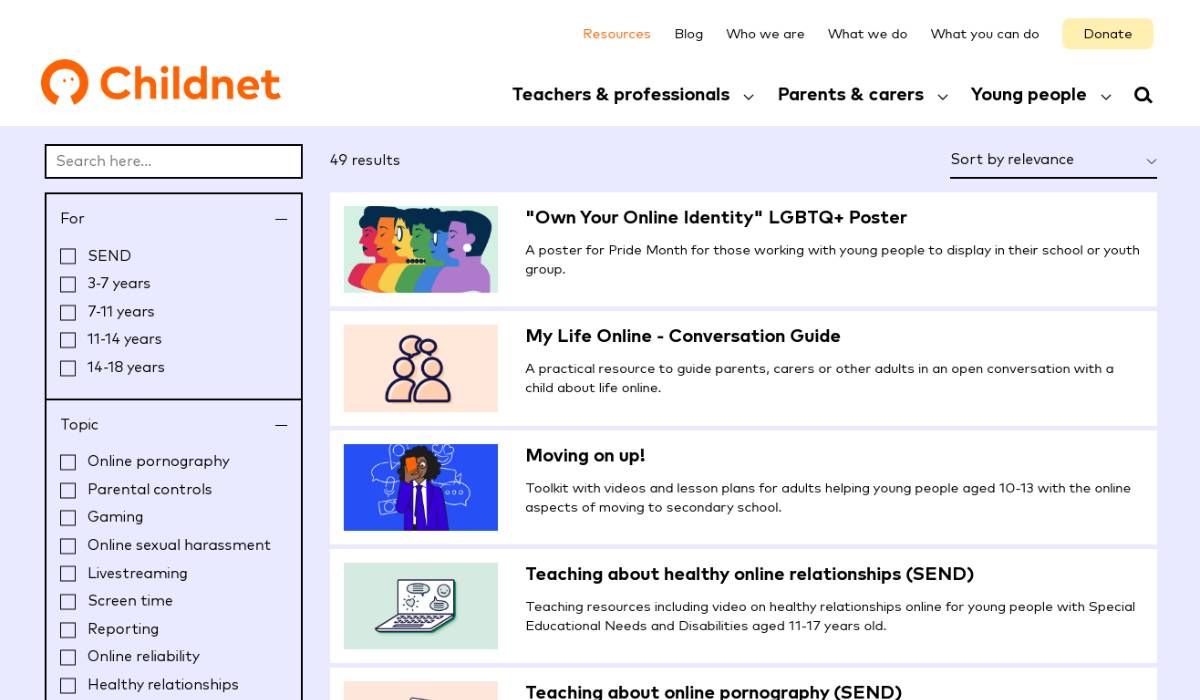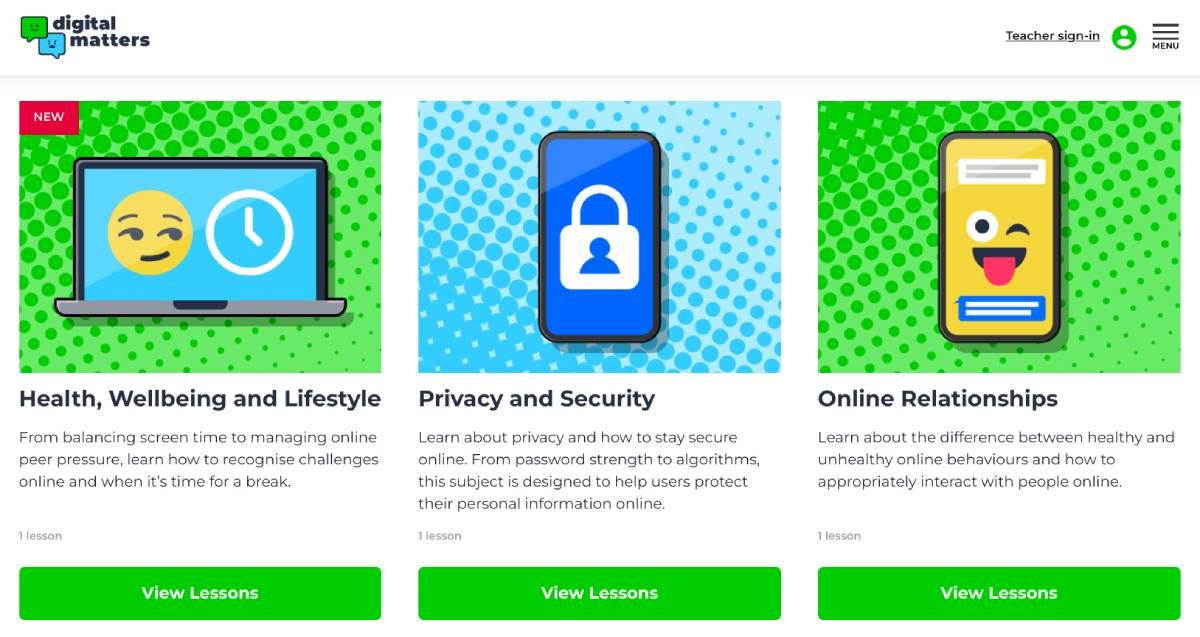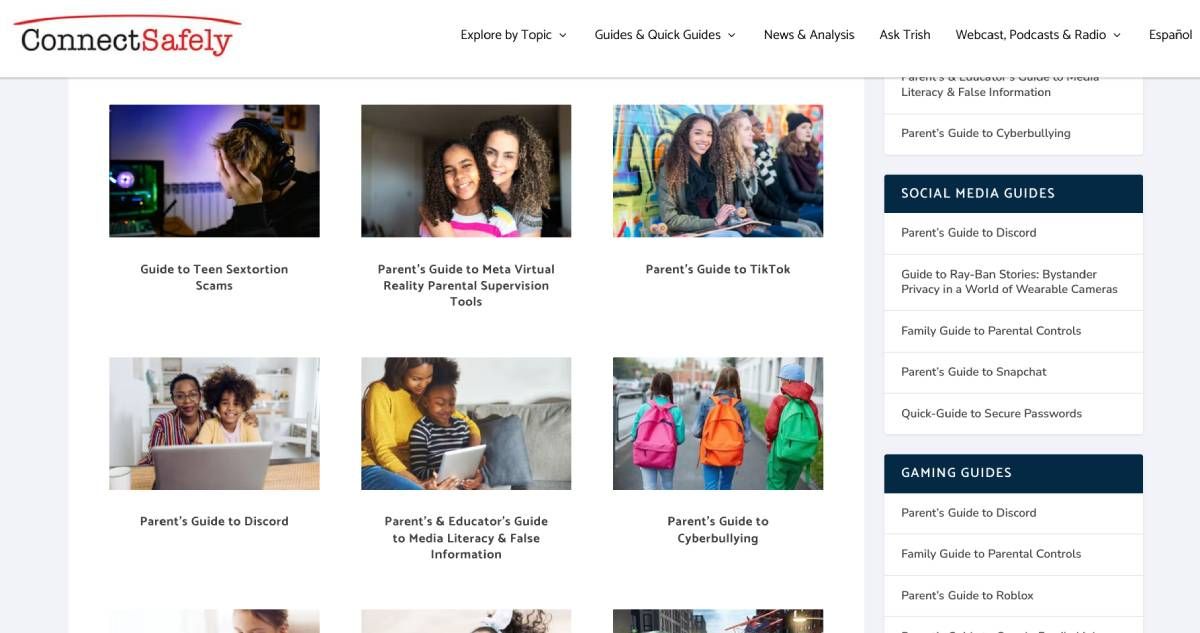5 Sites to Teach Children How to Use Internet Safely, For Kids and Parents
You can’t keep kids off the internet these days. Sooner or later they will have online profiles and social media accounts and will need to use the internet for education and information. Of course, the online world brings its dangers and pitfalls. It is therefore of the utmost importance to teach children how to use the internet safely as soon as possible.
These websites offer different ways for children, parents and educators to learn about digital best practices and good behavior online. They cover basics like security, privacy, and even behavioral patterns like cyberbullying through online games, interactive storytelling, quizzes, and in-depth guides.
1. Be Internet Awesome (Web): Google’s internet safety program for kids
Be Internet Awesome is a revamped initiative by Google to teach kids how to stay safe online, as well as best practices and good behavior. It’s a package of three tools: an online game for kids called Interland, a series of lesson plans for educators, and the “Be Internet Awesome” promise for parents.
Interland is a free internet safety game for kids. It is divided into four worlds, each with their own goals: Mindful Mountain (what to share and not to share online), Tower of Treasure (how to protect information), Kind Kingdom (behave online and avoid trolls and bullying) and Reality River (how to identify fake news and scams). Different types of games in each world teach kids best practices as they try to solve puzzles or complete goals.
The Pledge to Parents is a simple collection of five mission statements for the whole family to live by, a fun shared activity that helps keep everyone accountable. The curriculum is a bit more complicated and teaches kids the basics of how to be smart, alert, strong, kind and brave online to ensure their safety and that of others. Each of these foundations includes several lessons for educators to teach best practices.
Since 1995, Childnet has been one of the oldest and most respected charities dedicated to keeping children and young people safe online. It houses a variety of free resources and programs to teach best online practices from a young age.
You may access the Site as a child aged 4 to 11, 11 to 18, a parent or caregiver, and a teacher or professional educator. You will find detailed articles written for this audience to behave in common digital scenarios such as social media, gaming, video calling, online bullying, information reliability, etc. Childnet also provides a quick directory of several hotlines and support systems that children can access and direct links to the child protection service sections of several popular apps.
Over the years, Childnet has created several toolkits, videos, lesson plans, family activities, and other helpful materials. These are all collected in one place at Childnet Resources, where you filter them by smaller age groups (3-7, 7-11, 11-14, 14-18) and by topic (online sexual harassment, online grooming, parental controls). , screen time, etc.) and by type of material (activity, toolkit, presentation, story, lesson plan, video, competition).
3. Digital Affairs (Web): Free online safety lessons for 6-11 year olds
Digital Matters is a series of free interactive lessons and storytelling games for children aged six to eleven, their parents and educators. It was created by Internet Matters, an online child safety organization that works with several experts in the field to compile best practices for children online.
You’ll find lessons on privacy and security, online relationships, cyberbullying, managing online information, online reputation, health, well-being and lifestyle. Each lesson takes about an hour or two to complete the entire course.
Lessons are divided into two phases: Interactive Learning and Once Upon Online. In interactive learning, children are taught about the subject by educators or parents using a printable curriculum provided by Digital Matters or through online quizzes. Next, the child is encouraged to try the storytelling game Once Upon Online, in which they are presented with realistic scenarios and have to make the best decisions to stay safe online.
Digital Matters is an excellent resource for online safety education for 6-11 year olds. But if your child doesn’t fit into that age group, Internet Matters has many other free materials and resources for all ages to learn healthy digital habits.
4. ConnectSafely (Web): The best parenting guides and weekly Ask Trish help section
ConnectSafely has earned a reputation for providing concise and detailed guides for parents and educators, demystifying online trends and apps, and helping them teach kids how to use online tools safely. Typically the guides are available as a downloadable PDF, a shorter quick start guide (which can be printed as a poster) and a 5-10 minute YouTube video.
The guides cover various topics that are not often talked about. For example, as a parent, you might not know the faintest thing about TikTok aside from knowing that it is a social media app that your child uses. ConnectSafely’s guide takes you from zero to hero, explaining how the app works, the potential risks to children, best practices parents can follow and how caregivers can help children use the app healthily and responsibly. Aside from TikTok, you can find guides for Facebook Messenger, Roblox, Snapchat, Amazon Alexa, Discord, and even general topics like cyberbullying, teen sextortion scams, and hate speech.
Another ConnectSafely highlight is the weekly Ask Trish column, moderated by cyberbullying and online child safety expert Trish Prabhu. Anyone can write to Trish for advice on tricky online situations. She then creates a weekly TikTok video and companion article to address the issue and provide practical, positive steps.
Like ConnectSafely, the Family Online Safety Initiative (FOSI) focuses on helping parents and educators guide children and students, rather than building tools directly for children. Their Good Digital Parenting program is a widely cited toolkit of resources for educating young internet users.
The toolkit is available for two age groups: 6-11 years and 12+ years. They both share some materials like FOSI’s seven steps to digital parenting, but adapt the other materials like the online family safety agreement or “teachable moments” according to the age group. Both toolkits also include a PowerPoint presentation with statistics, information and how the materials were used.
On the main FOSI website you will find several articles for parents or educators, divided by topic (digital reputation, gaming, screen time) or platform (Facebook, Twitter, Google, TikTok, Snapchat, etc.) It is easy to find these materials by filtering the topic or type of material you want (blog plot, video, toolkit, or resource guide).
Don’t overwhelm with information
While these sites are great for teaching kids internet safety, you need to introduce them gently. There’s a lot to say about good behavior online, and it’s easy for kids to get overwhelmed. So use these pages at their recommended pace or create a schedule for your child to learn and implement the advice given.



